|
   |
|
Page 7 |
Newsletter 125 Summer 2019 © Hampshire Mills Group |
|
Bere Mill, Whitchurch
Ivor New
Photos by Eleanor Yates
|
|
The Bere Mill complex of buildings was largely burnt
down in a major fire just over a year ago. The
house was badly damaged with the roof, its interior,
and much of the exterior walling being destroyed.
The mill and barn fared even worse with essentially
everything except heavy metal, foundations, and some
walling being consumed by the fire. The house has
now been rebuilt and restored to a high standard, so
attention has turned to the renovation of the mill.
Rupert and Elizabeth Nabarro, the mill owners,
invited a team from HMG to visit the mill to discuss
the possible options available before they start
this work
The mill proper is set over the River Test upstream
of Whitchurch. It has been used for various tasks
over its life but in the early years of the 20th
century it was converted into an electrical power
generating station to provide power to the
Laverstoke papermill which is about a mile away via
the direct footpath, and a little further via the
river.
|
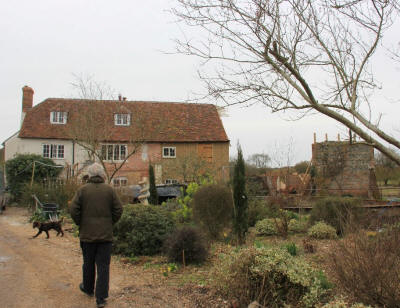 |
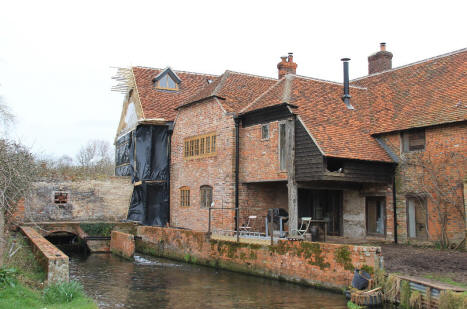 |
|
A Gilkes turbine with automatic sluice control was
installed to drive a 440V generator. The power from
this was fed to the paper mill via a cable described
as coaxial, which was later sold to supply power to
St Michaels Mount. As it was clearly a submersible
cable one can but speculate that it could have been
laid on the river bed for speed and cheapness of
installation and ease of removal.
After the second world war the turbine was
refurbished and the generator rewound to provide 40A
at 220V DC, nominally 8.8kW, but in practice
probably providing a maximum of about 7.5kW. |
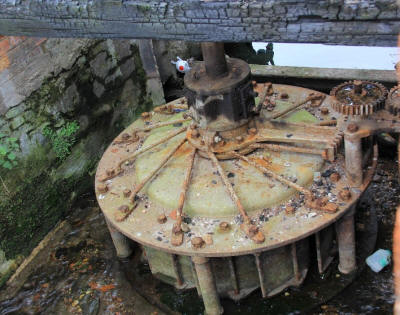 |
|
The power generated, being at half the earlier
voltage, would have been much safer, and in addition
to supplying Laverstoke power was also made
available locally. This change would mean that the
supply cable would need twice the current rating to
supply the same power so the original one was
replaced. This configuration remained intact and
was operated, at least intermittently, to provide
power on site until it was destroyed by the fire.
When we arrived, Rupert welcomed us and described
the general state of the buildings. He then took us
to view the remains of the mill.
|
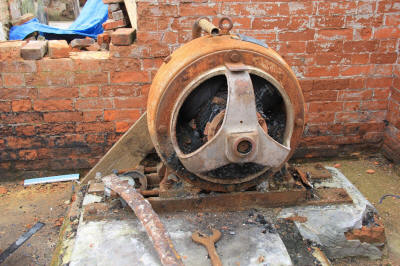
Generator (above), meters and
electrical distribution equipment (on right). |
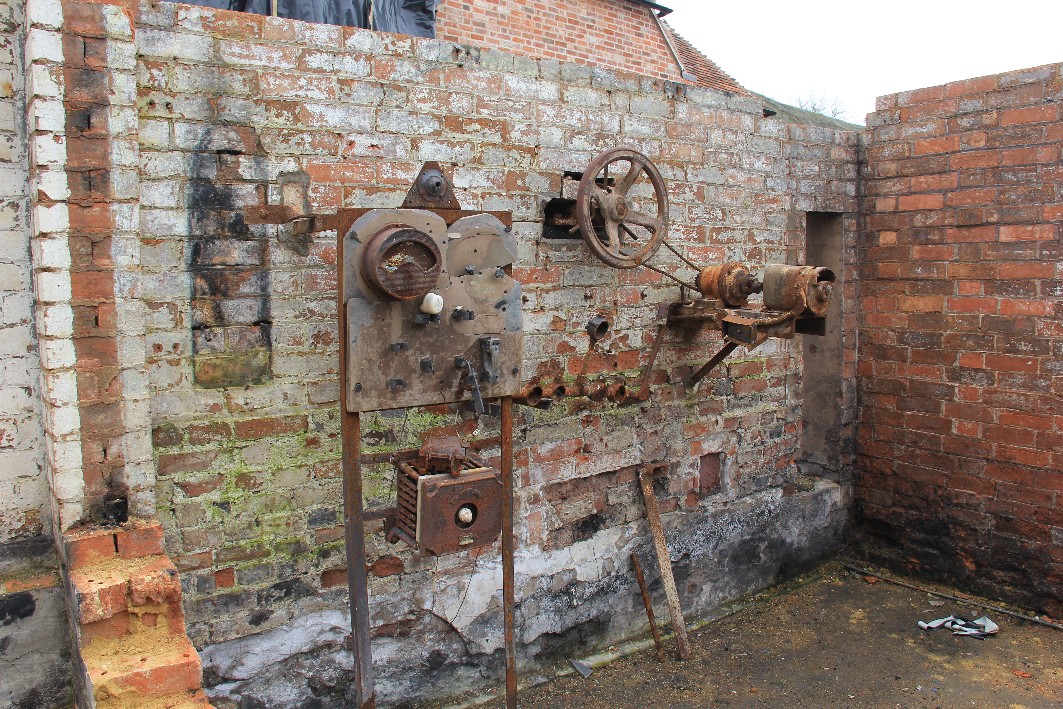 |
|
It was a sad sight with virtually nothing remaining
except the stabilised foundations with the
vertically mounted turbine in situ together with the
burnt-out metal work of the drive gearing, turbine
controls, generator, meters and electrical
distribution equipment. All the auxiliary
equipment, with the possible exception of the bevel
gear at the top of the turbine shaft, is almost
certainly beyond economic repair.
|
|
The cast iron bevel gear, while only in the order of
a metre in diameter and comprising a rim with
mortices to locate the wooden cogs and six heavy
flanged spokes, in all weighs in the order of ¼-½
ton. The expansion caused by the intense heat has
caused stress cracking or breaking associated with
each of the six segments of the wheel.
The most obvious issues are: a compound break in
the circumference; two broken spokes; and two
segments with hairline cracks in the circumference.
Even with all this damage the wheel is all in one
piece so it is understood that a specialist company
may be able to repair it, but it might be simpler to
use the broken wheel as a pattern to cast a new one. |
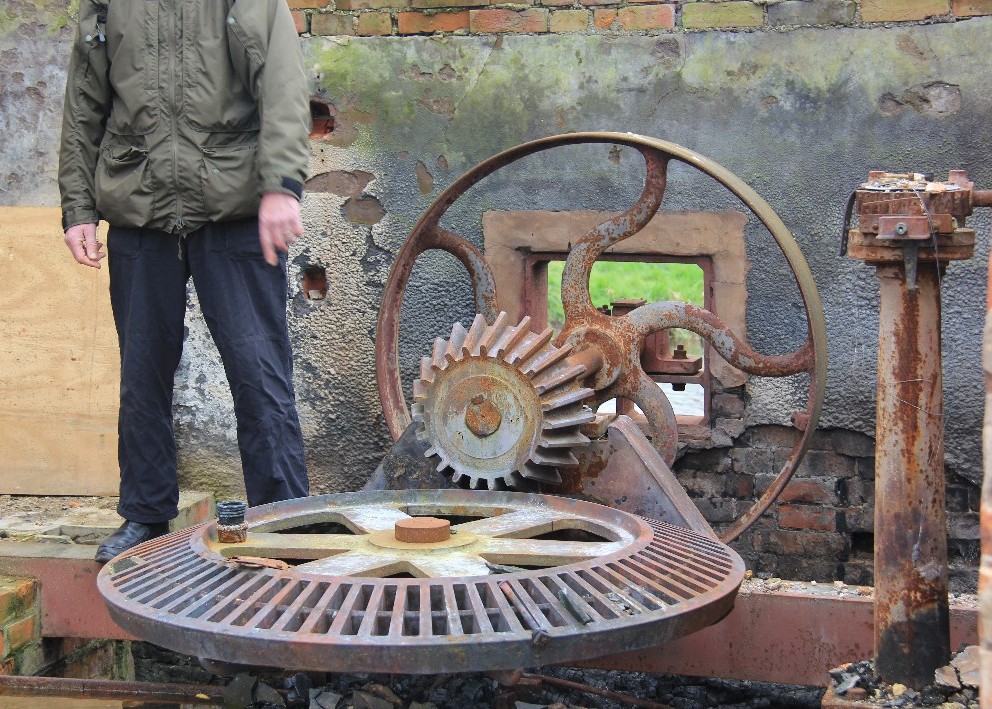 |
|
The later years of the 19th and early years of the
20th century were important in the development of
power generation and transmission. It was over
these years that the principles of electricity
generation and effective distribution as a utility
became understood. The mill’s unusual and
historically important configuration which was
installed at this time makes it a prime candidate
for conservation as even in its current state it
provides a good insight into an unusual example of
the technology of the time.
Assuming the mill owners accept this, it would seem
there are three basic routes that could be followed:
1. Stabilise and conserve the equipment of this
historically important system into a ‘museum’
exhibit.
2. Repair, refurbish, and source replacement
equipment, as required, to rebuild the generation
equipment and generation capability to that which
was lost, the aim being to maintain the historical
integrity of the site.
3. Undertake basic conservation as in option 1
(but accepting some detailed changes may be needed
for this option to work) and then install a modern
generating capability with the new turbine being
installed in the headrace just upstream of the old
one. The installation should be designed to
minimise changes to the existing environment,
although some changes to the hatches and around the
old turbine would probably be necessary. It is
anticipated that any new generating system would be
fitted with modern electronic controls that would
allow power generated in manual mode to be used
locally, and power generated in auto mode to be fed
into the grid.
Clearly any work done must fit in with long term
plans for the mill and will have its own attributes
and costs. The mill owners will clearly have an
unenviable task as they try to balance the cost
benefit equation that will inevitably have to be
resolved. |
|
On a historical note, all the well-known information
regarding the mill has it springing into life when
the mill house was built in 1711. It does seem
surprising that this clearly viable location had not
been used previously as a mill site. When looking
at the 25,000 Ordnance Survey map while writing this
a surprising detail was noticed – Bere Mill is
written in antique lettering, which means at some
stage the mapping survey thought the mill was a
‘non-Roman site of antiquity’. It would be
interesting to see if this is the case.
Finally, we would like to thank Rupert and Elizabeth
for their hospitality and the opportunity to see the
mill in its current sad state, and hope our visit
was useful. We wish them well in their endeavours
to bring the mill back to a useful form that will
enable it to survive well into the future. |
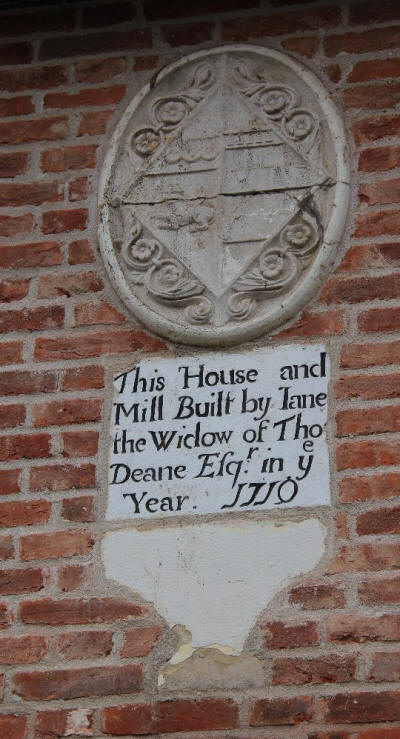 |
|
Planning Applications have been lodged with
Basingstoke & Deane Borough Council for repairs to
Bere Mill.
The Basingstoke Gazette of 18 May 2019
reports
here. |
|
|
